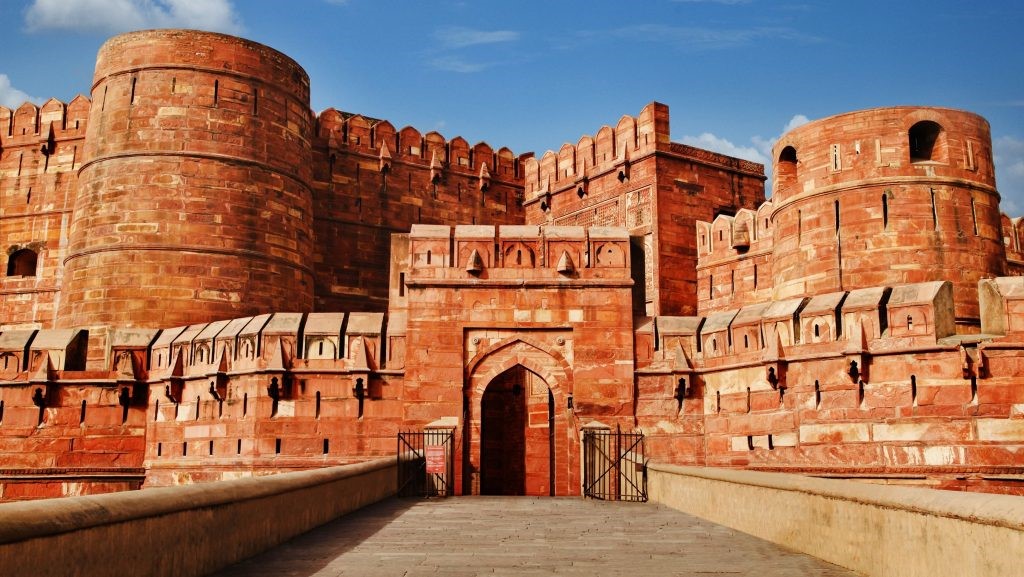AGRA FORT

Disclaimer: Copyright infringement not intended.
Context: The Delhi High Court sought the Archaeological Survey of India’s response in a plea moved by two registered trusts against the ASI’s communication rejecting permission to organise a cultural programme at the Agra Fort celebrating the birth anniversary of Chhatrapati Shivaji Maharaj on February 19.
Details:
Agra Fort:
- Agra Fort is a historical fort in the city of Agra in India.
- It was the main residence of the emperors of the Mughal Dynasty till 1638, when the capital was shifted from Agra to Delhi.
- The Agra fort is a UNESCO World Heritage site.
- It is about 2.5 km northwest of its more famous sister monument, the Taj Mahal.
- The fort can be more accurately described as a walled city.
Origin:
Babar:
- After the First Battle of Panipat in 1526, the victorious Babur stayed in the fort, in the palace of Ibrahim Lodi. He later built a baoli in it.
- His successor, Humayun, was crowned in the fort in 1530.
- He was defeated at Bilgram in 1540 by Sher Shah Suri. The fort remained with the Suris till 1555, when Humayun recaptured it.
- Adil Shah Suri’s general, Hemu, recaptured Agra in 1556 and pursued its fleeing governor to Delhi where he met the Mughals in the Battle of Tughlaqabad.
Akbar:
- Realising the importance of its central situation, Akbar made it his capital and arrived in Agra in 1558.
- His historian, Abul Fazl, recorded that this was a brick fort known as ‘Badalgarh’. It was in a ruined condition and Akbar had it rebuilt with red sandstone from Barauli area Dhaulpur district, in Rajasthan.
- Architects laid the foundation and it was built with bricks in the inner core with sandstone on external surfaces. Some 4,000 builders worked on it daily for eight years, completing it in 1573.
Shah Jahan:
- It was only during the reign of Akbar’s grandson, Shah Jahan, that the site took on its current state. Shah Jahan built the beautiful Taj Mahal in the memory of his wife, Mumtaz Mahal. Unlike his grandfather, Shah Jahan tended to have buildings made from white marble. He destroyed some of the earlier buildings inside the fort to make his own.
- At the end of his life, Shah Jahan was deposed and restrained by his son, Aurangzeb, in the fort. It is rumoured that Shah Jahan died in Muasamman Burj, a tower with a marble balcony with a view of the Taj Mahal.
- The fort was invaded and captured by the Maratha Empire in the early 18th century.
- Thereafter, it changed hands between the Marathas and their foes many times.
- After their catastrophic defeat at Third Battle of Panipat by Ahmad Shah Abdali in 1761, Marathas remained out of the region for the next decade.
- Finally Mahadji Shinde took the fort in 1785. It was lost by the Marathas to the British during the Second Anglo-Maratha War, in 1803.
- The fort was the site of a battle during the Indian rebellion of 1857, which caused the end of the British East India Company’s rule in India, and led to a century of direct rule of India by Britain.
PRELIMS QUESTION:
Q.Consider the following statements in reference to Agra Fort:
- The Agra fort is a UNESCO World Heritage site.
- It was the main residence of all the emperors of the Mughal Dynasty
- Its sister monument is the Taj Mahal.
Which of the above is/are correct?
a.1 and 2
b.2 and 3
c.1 and 3
d.1, 2 and 3
Correct answer: c



.jpeg)


1.png)
